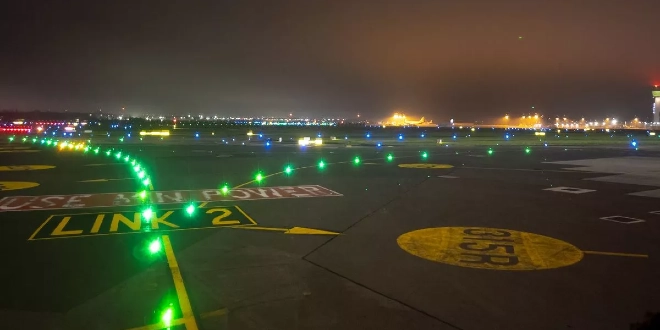Dublin Airport has officially received the green light to expand its nighttime operations, including a rise in permitted flight numbers and longer hours for using its second runway. The development follows years of debate and appeals, drawing mixed reactions from both aviation stakeholders and nearby residents.
Extended Night Operations and Runway Access
Under the new planning approval, the total number of flights allowed between 11 p.m. and 7 a.m. has increased from an average of 65 to 95 per night. Additionally, the airport’s north runway—previously off-limits during these hours—will now be available for takeoffs and landings from 6 a.m. to midnight, expanding its operational window by three hours.
While this change will boost the airport’s capacity and flexibility, it comes with specific limitations. A Noise Quota Scheme will govern nighttime operations on the north runway. Aircraft will be permitted only if they fall within a prescribed noise threshold. Planes exceeding this noise level will be prohibited from flying during the designated night hours.
Regulatory Body Emphasizes Community Safeguards
An Coimisiún Pleanála, Ireland’s national planning commission, stated in its decision that it would cap annual nighttime flights at 35,672 in order to protect the quality of life for local residents. The body emphasized that this cap, combined with the noise quota, strikes a balance between airport growth and minimizing disruption to nearby communities.
The commission explained that a quota-only system might inadvertently allow more night flights, thereby amplifying the overall noise impact. By implementing both restrictions, the aim is to manage noise exposure holistically rather than simply counting aircraft.
Background: Confusion Over Draft Regulations
The approval comes after significant confusion in 2023 when An Coimisiún Pleanála issued a draft proposal that appeared contradictory. On one hand, it suggested extending nighttime flight hours and replacing the flight cap with a noise quota. On the other hand, it proposed limiting total nighttime flights to 13,000 annually and restricting the north runway to limited hours.
At the time, airport operator daa warned that the draft measures would significantly reduce the average number of night flights from 65 to just 35. This prompted criticism from major aviation stakeholders. Aer Lingus CEO Lynne Embleton labeled the proposal as “absolute madness,” warning that it could undermine essential airline services. Several industry bodies, including Ibec, the Irish Exporters’ Association, and Enterprise Ireland, echoed similar concerns.
Community Concerns and Legal Challenges
Local opposition to increased flight activity has been strong. The initial loosening of restrictions in June 2022 by the Aircraft Noise Competent Authority (part of Fingal County Council) triggered an appeal by residents and the environmental group Friends of the Irish Environment.
Many residents remain dissatisfied with the latest decision. Niamh Maher, who represents the St Margaret’s The Ward Residents Group and lives directly under the north runway flight path, criticized the outcome. She voiced concerns about the health consequences of increased nighttime noise, particularly in terms of disrupted sleep and overall well-being. “This decision fails to address the human impact of these changes,” Maher stated.
Implications for Passenger Capacity and Government Action
Beyond noise concerns, the debate ties into a broader issue: the 32 million annual passenger cap still in place at Dublin Airport. That limit, set nearly two decades ago during the approval process for the airport’s new terminal, is increasingly viewed as outdated by many in the aviation and business sectors.
Minister for Transport Darragh O’Brien, whose constituency includes the airport area, has indicated he is consulting with the Attorney General to determine whether legislation could be used to amend or remove the passenger cap. This would allow for greater alignment between the airport’s infrastructure capacity and its operational potential.
 The Daily Star Ireland
The Daily Star Ireland

